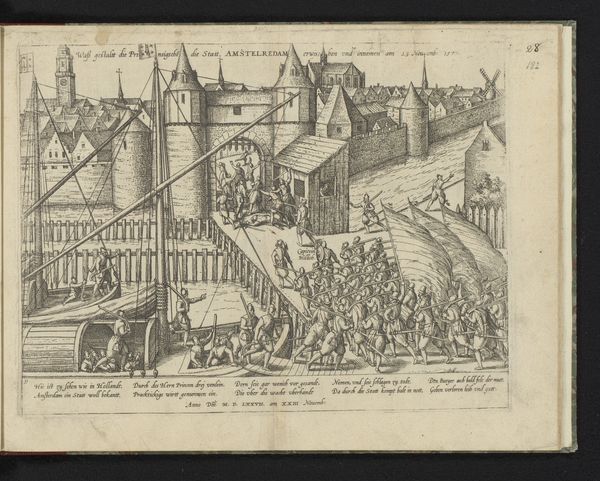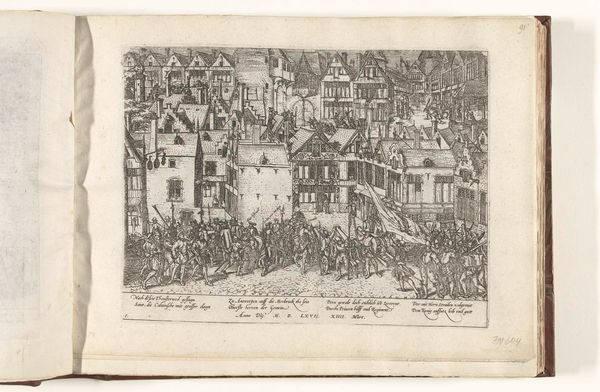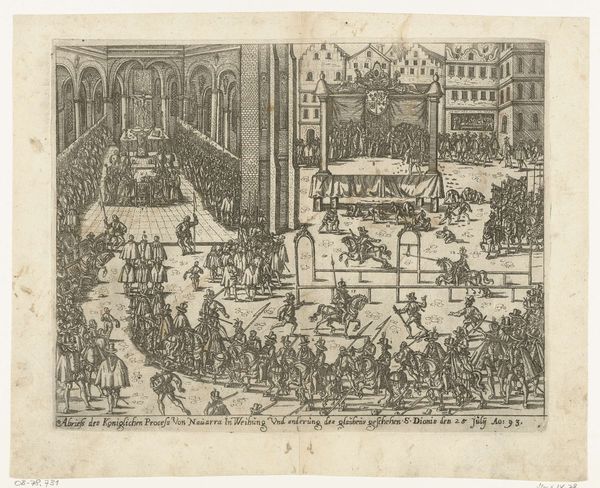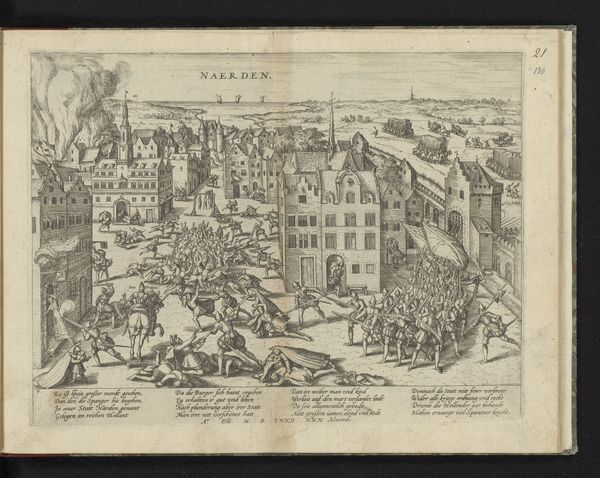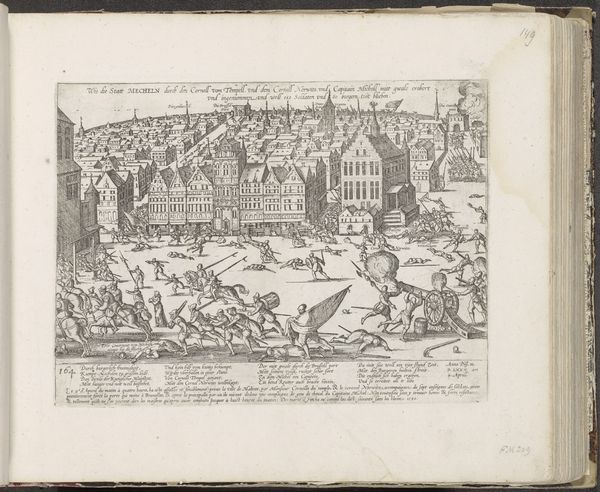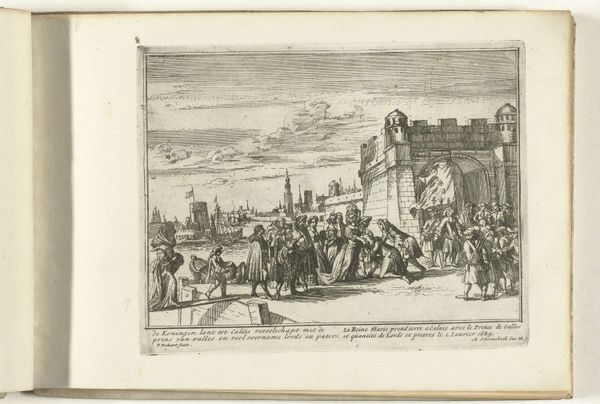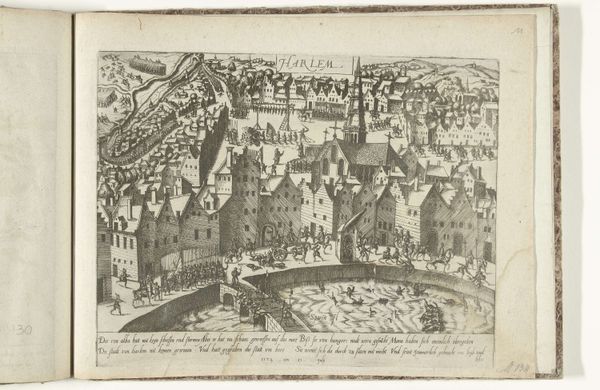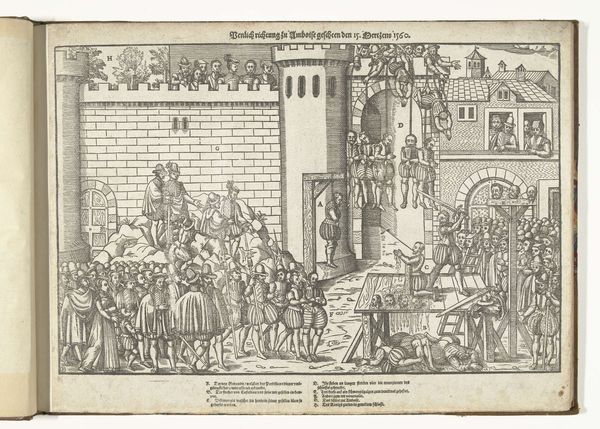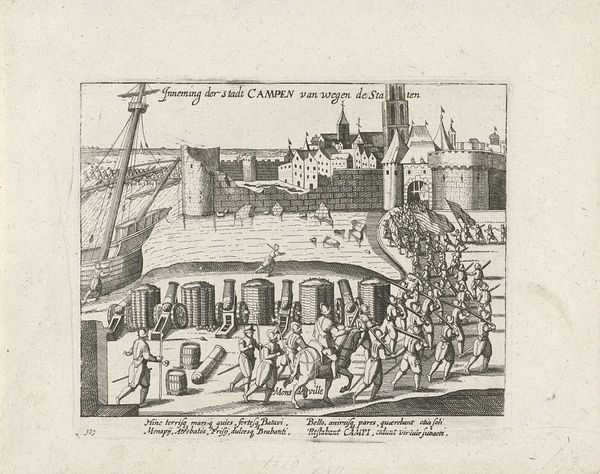
print, engraving
#
medieval
# print
#
cityscape
#
history-painting
#
engraving
Dimensions: height 240 mm, width 310 mm
Copyright: Rijks Museum: Open Domain
Editor: Here we have an engraving entitled "Moord door de Spanjaarden te Naarden, 1572" by an anonymous artist, dating from between 1572 and 1574. It’s quite a detailed cityscape depicting violence. What draws your attention when you look at it? Curator: The immediate thing that strikes me is the deliberate documentation of violence through a widely accessible medium – the print. Engravings like this served as powerful tools of propaganda and shaping public opinion, and mass production and distribution informed social and political consciousness. Look at the labour involved; imagine the engraver meticulously etching this scene onto the plate to then be disseminated. This wasn't just art, it was a deliberate act of materialising history for mass consumption. What does that act of materialising the story of the murders say to you? Editor: It’s interesting that you emphasize the distribution aspect, how prints democratized the image and message. It wasn't just for the wealthy elite. The print medium underscores its significance as both document and narrative. What’s also striking is the way the violence is positioned within the urban environment, almost woven into the fabric of the city itself. Curator: Exactly! The cityscape isn't merely a backdrop; it’s a participant. Think about the etcher having to delineate between the figures and architectural background using a conscious deployment of visual rhetoric. And consider the economic implications: the demand for these images, the infrastructure needed to produce and distribute them, the ways that money and labour fueled the creation of collective memory. It points to an entire system of production and consumption inextricably linked to political and social events. Editor: I see your point! It's fascinating to consider the material conditions surrounding this image's creation. Looking at it from this materialist perspective opens up new avenues of understanding how the print worked as both an artwork and as an artifact in society at that time. Thanks. Curator: Indeed. By examining the work, production, distribution and context of the print, we are closer to understanding its enduring power as a historical artifact.
Comments
No comments
Be the first to comment and join the conversation on the ultimate creative platform.
